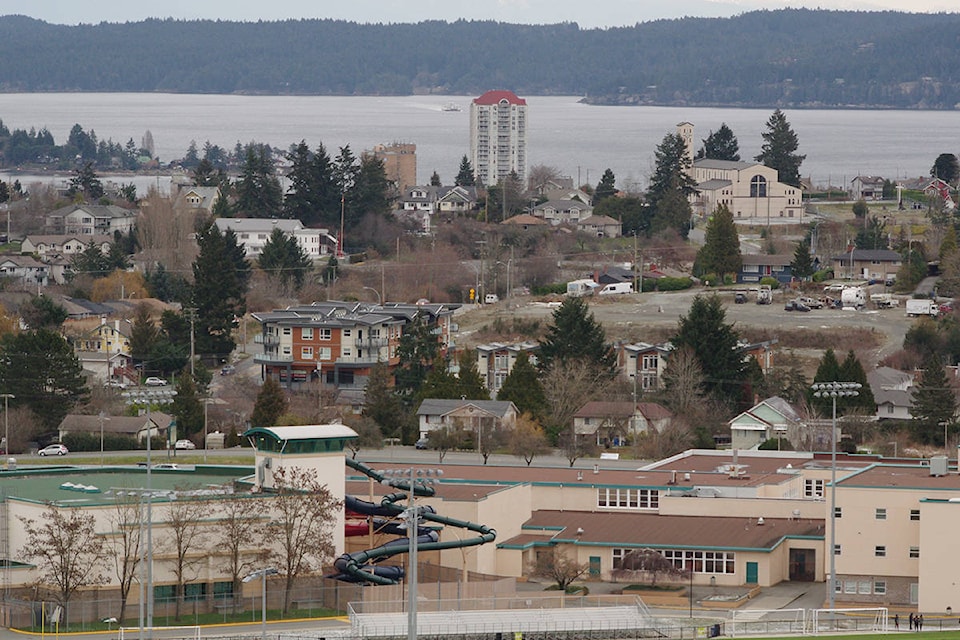A pandemic is a bleak time for a state of the economy report, but the City of Nanaimo is hopeful that things are bound to get better.
The city’s economic development officer Amrit Manhas delivered the second annual state of the Nanaimo economy report at Monday’s council meeting and expressed optimism that the city will build back, along with the rest of B.C., in 2021 and beyond.
She said after a “very strong” 2019, the outlook was for lower growth, “but no one really saw the pandemic around the corner.”
The arrival of COVID-19 in B.C. and the ensuing shutdowns had “uneven” impacts across the local economy, Manhas said.
“Many sectors, such as manufacturing, health care, they sort of began their sharp rebound, whereas other sectors like tourism, hospitality and entertainment, they’ve continued to struggle,” she said.
Nanaimo’s 2019 gross domestic product – value of goods and services produced – rose 2.9 per cent, above the B.C. average of 2.6 per cent. Updated numbers aren’t yet available, but Manhas’s report showed B.C. expects a 5.3 per cent decrease in GDP for 2020 followed by a 5.1 per cent increase in 2021, and Nanaimo has closely mirrored B.C.’s trends in recent years.
Coun. Ian Thorpe expressed interest in seeing Nanaimo’s GDP figures when they become available.
“For me they’re important in their relationship to business health and the strength of our tax base and all those good things that allow the city to afford to be able to provide the services that our residents wish,” he said.
Nanaimo’s average household income, $88,338, and median household income, $71,711, are projected to grow at 3.2 per cent and 3.6 per cent per year, respectively, a growth rate that’s faster than the B.C. average, but still below the B.C. average and median household incomes of $106,682 and $83,693, respectively.
The state of the economy report showed Nanaimo’s unemployment rate at 9.1 per cent, almost twice the 4.6 per cent rate from the previous year. Unemployment in Nanaimo is lower than the Canadian rate of 9.5 per cent, but higher than B.C.’s 8.8 per cent and Vancouver Island’s 8.6 per cent. Nanaimo’s labour force has shrunk 4.3 per cent, more than twice B.C.’s decline of 1.9 per cent. Manhas said demographics are part of the reason, and her report cautions that the labour force survey can vary at the local level due to measuring a small sample size.
READ ALSO: Infrastructure, internet, industrial land key to Nanaimo’s economic development strategy
Business licences were up 0.8 per cent in the City of Nanaimo in 2020, which represented a net gain of 48 businesses. The professional, scientific and tech services sector gained a net of 27 businesses, the accommodation and food services sector had a net loss of 32 businesses and the retail sector had a net loss of 11 businesses.
Consumer spending data from Esri Canada showed that people in Nanaimo spent 17 per cent more relative to the national average on health care, 17 per cent more on gifts or charitable contributions, 10 per cent more on gambling and nine per cent more on tobacco and alcohol. At the same time, Nanaimoites spent 32 per cent less than the Canadian average on personal taxes and 26 per cent less on transportation.
READ ALSO: City of Nanaimo’s population reaches 100,000
The state of the economy report also presented data on building permits and real estate. Manhas said 2020 was the City of Nanaimo’s second-largest year for building permit values at $243.1 million, behind only 2019 and its $445.3 million in building permits. Housing starts were down with 1,084 living units created in Nanaimo in 2020 after 1,877 units created the year before; Manhas said financial uncertainty was a reason for the dip. House prices soared, up 9.7 per cent to an average single-family home price of $616,588.
The report concluded with a roundup of grim tourism numbers showing “the sever impact of the pandemic. Conference centre delegate days were down 81 per cent in 2020, airport passengers were down 65 per cent, revenue per hotel room was down 46 per cent, hotel occupancy was down 40 per cent and ferry traffic was down 30-42 per cent.
“This sector will likely be the last to recover, and not until global travel restrictions are lifted and the majority of the population is vaccinated,” Manhas said.
Coun. Don Bonner asked how the city’s new doughnut economic framework will fit into the city’s state of the economy reporting, as city council recently adopted the environmentally and socially conscious economic model as a guiding principle. Manhas said the city’s Reimagine Nanaimo master planning team and other staff members have been talking about it and trying to come up with “robust indicators” the city can use to track progress.
“That is work that is definitely happening now. It’s in the forefront of our minds,” she said.
Manhas added that she’s “very optimistic about the future,” calling the city’s new economic development strategy and work plan “exciting.”
“When we see people moving here even in a pandemic year … younger families moving here, that is really, really encouraging,” she said. “We want to continue to build the type of city that everybody wants to come and live in and invest in.”
The city issued a press release related to the state of the economy report on Tuesday, and Mayor Leonard Krog said in the release that the statistics within the report reflect well on Nanaimo.
“I say it all the time - our city is an incredible place to live, work and play,” he said. “And now we’re 100,000 residents strong and growing. That’s going to look great on our population sign.”
READ ALSO: Nanaimo’s recovery task force recommends pride of place, strategic investment
READ ALSO: Not-so-rosy State of the Island report caps off virtual summit
editor@nanaimobulletin.com
Like us on Facebook and follow us on Twitter
